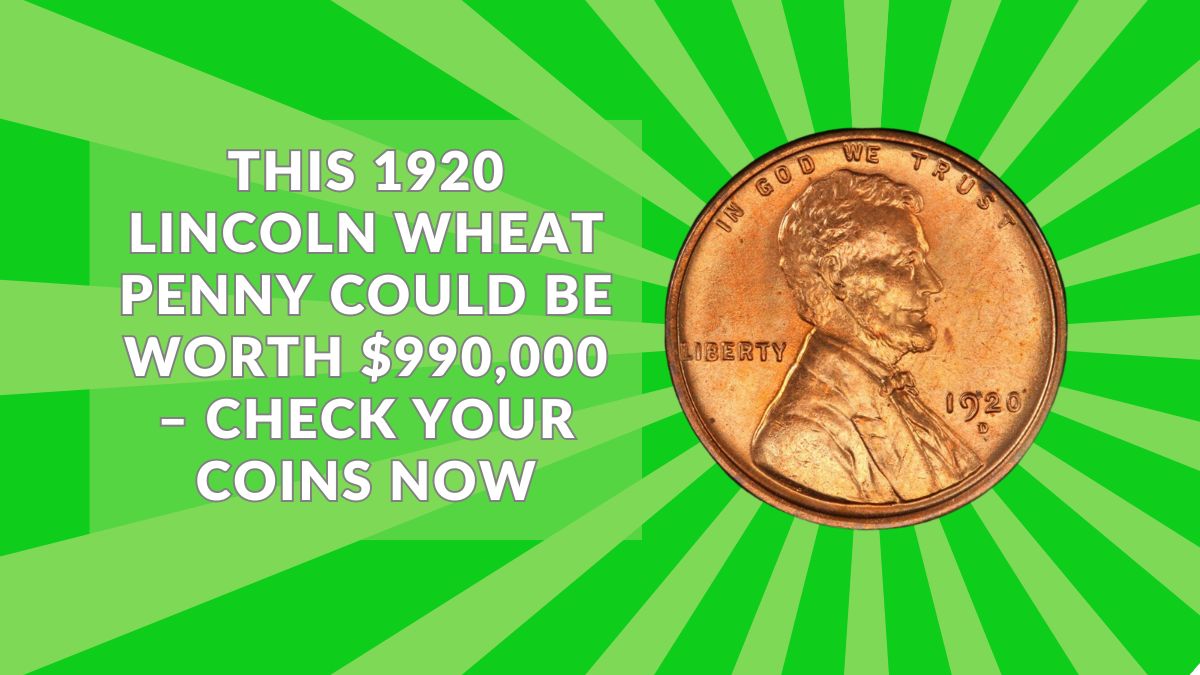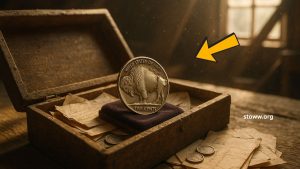Many collectors overlook the 1920 Lincoln Wheat Penny, but certain versions of this century-old coin have fetched staggering prices.
Recently, one sold for as much as $990,000 due to its rare attributes, pristine condition, and historical importance. If you’ve got one lying around, it might just be worth more than a small fortune.
Rarity and Auction Highlights
While millions of these pennies were produced in 1920, very few remain in near-perfect condition today. Coins graded at MS-67 Red (full original red luster with no signs of wear) by professional grading services like PCGS or NGC are extremely rare. It’s those high-grade examples that bring jaw-dropping auction results.
A recent auction saw a 1920 Lincoln Wheat Penny, graded MS-67 RD (Red), sell for an incredible $990,000. This value isn’t typical for all 1920 pennies but represents the high end of what collectors are willing to pay for the best of the best.
Grading and Professional Evaluation
The coin grading scale plays a crucial role in determining value. The Sheldon Scale, ranging from 1 to 70, is used by grading companies.
Coins graded 65 and above are considered gem uncirculated and can demand thousands depending on their color and mint origin.
Getting your coin professionally graded is a must if you suspect it’s of high value. Services such as PCGS or NGC provide certification, which can greatly increase a coin’s credibility and market value.
Authentication Tips
Before rushing to conclusions, check a few key things about your 1920 Lincoln Wheat Penny:
- Look for the Mint Mark: Coins with “D” (Denver) and “S” (San Francisco) marks may have higher collector interest.
- Inspect the Surface: Coins free from nicks, discoloration, and wear have better chances of high valuation.
- Check the Color: As mentioned, red coins (RD) are worth far more than their brown counterparts.
- Seek Professional Advice: If you believe your coin may be valuable, have it evaluated by a professional before selling.
What Drives the High Value
While most circulated 1920 pennies are worth under a dollar, a select few rise in value for the following reasons:
- Preservation: The fewer blemishes or signs of wear, the more attractive it is to collectors.
- Original Mint Red Color: Red-colored copper coins command premium prices due to their rarity.
- Historical Relevance: Being over a century old, these coins offer a slice of American history, especially those from scarcer mint locations.
| Feature | Philadelphia (No Mint Mark) | Denver Mint (D) | San Francisco Mint (S) | Top Auction Price |
|---|---|---|---|---|
| Estimated Mintage | 310,165,000 | 49,280,000 | 46,220,000 | $990,000 (MS-67 RD) |
| Common Circulated Value | $0.20 – $1.00 | $0.50 – $2.00 | $1.00 – $5.00 | |
| Uncirculated Value (BN) | $10 – $30 | $15 – $60 | $25 – $100 | |
| High-Grade Value (RD) | Up to $2,000+ | Up to $5,000+ | Up to $9,000+ |
The 1920 Lincoln Wheat Penny may seem like just another old coin, but under the right conditions, it could be a once-in-a-lifetime find.
Collectors continue to seek out these coins in top condition, especially those with their original red luster. If you come across one in a forgotten drawer or coin jar, it might be time to get it checked – it could be worth more than you ever imagined.
FAQs
What is special about the 1920 Lincoln Wheat Penny?
The 1920 penny is sought after due to its age and collectible nature. High-grade versions, especially with red coloring and rare mint marks, can command high prices.
How do I know if my 1920 penny is valuable?
Inspect the coin’s condition, color (brown, red-brown, or red), and mint mark. Coins in pristine condition with a red hue and San Francisco mint mark are typically more valuable.
Can I sell my 1920 Lincoln Penny without grading it?
Yes, but having the coin professionally graded increases its trust and potential sale price, especially in auctions or online sales.



